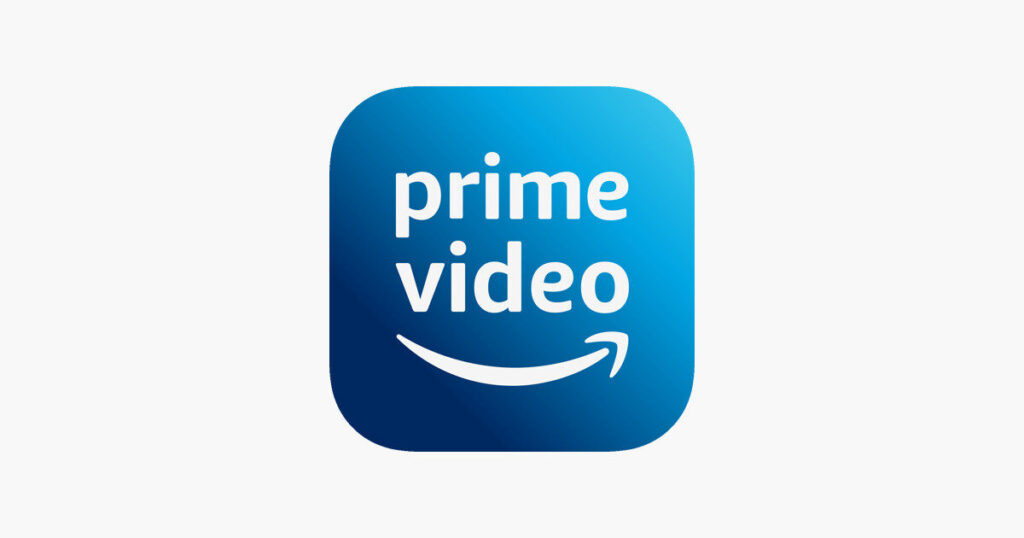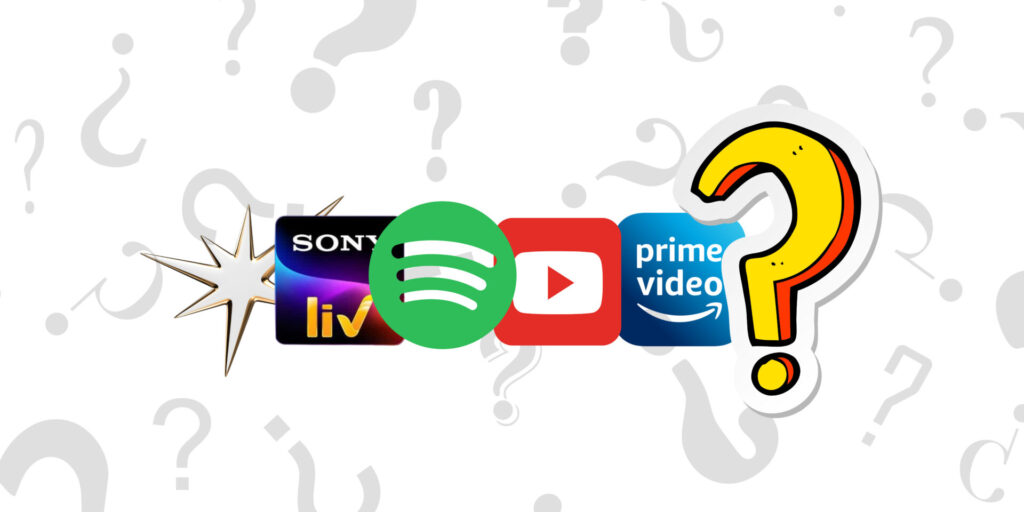Did you recently pay a hefty subscription fee to enjoy an uninterrupted and ad-free experience on your favourite OTT or video-sharing platform? But even as a premium member, are you still being bombarded with ads?
Confused?
We were, too. We then set out to conduct a study to understand whether a Premium or paid subscription guarantees the consumer an ad-free experience as several platforms claim, or rather it only limits exposure to ads while streaming content.
To understand the implications of being a paid consumer, we delve into the Terms of Use of several platforms, such as Amazon Prime, Jio Hotstar, Sony LIV and Youtube, to evaluate the benefits of being a premium member and to understand whether subscription fee guarantees an ad-free experience, or only entails an access to all content on such platform.
Why see Advertisements?
Over the Top (OTT) platforms like Prime Video, Netflix, YouTube, etc. rely on different monetisation methods. In these methods, the most popular model is based on advertisement, and the other is based on subscription fees. These are also called Advertising Video On Demand (AVOD) and Subscription Video on Demand (SVOD).

AVOD is a model wherein content is generally freely available to consumers, with advertisements placed throughout the content. In such models, consumers must watch ads in exchange for free content. YouTube is a prime example of this model. SVOD model, on the other hand, provides consumers unlimited access to video streaming for a monthly or yearly subscription fee, such as Prime Videos, Netflix, and Sony LIV.
Most platforms today operate on both of these models to generate maximum revenue. They offer free services with adverts placed throughout the content and/or then provide an ‘ad-free’ experience in exchange for a subscription fee (monthly/yearly). Ultimately, a platform’s revenue model depends on the way it wants to provide its services and compete with other providers. That said, SVOD is often a preferred revenue mechanism by a lot of companies like Prime Video, JioHotstar+, Sony LIV, etc.
The problem appears when consumers of an SVOD, even after paying the subscription fee, experience ads. Take Amazon Prime Video & Sony LIV for example. The subscribers to Amazon Prime Video members continue to be shown trailers of prime original shows, and subscribers of Sony LIV experience ads on watching Live TV, or recorded shows.
This practice raises the question as to then what does premium entail in SVOD? And whether the platforms are actually providing an ad free experience? We looked through some of these platforms and analysed their policies on advertisements. Here’s what they are saying about ad-free and what is hidden in the terms of service.
Platforms and Ad Policies: Who all are deceiving consumers?
We researched 5 different streaming platforms including Amazon Prime Video, Jio Hotstar, YouTube, Spotify and Sony Liv, and this is what we found.
Amazon Prime Video:
Amazon Prime (‘Prime’) has a unique business model. It relies on advertisement, subscriptions fees and an additional subscription within the platform to access certain content eg., Lionsgate Play’s content. It is crucial to note here that Prime, includes Prime Video, and other services such as quicker delivery, unlimited music services, early access to discount offers etc.

Amazon Prime claims to provide unlimited ad-free video streaming of the latest movies, amazon originals, Live sports, and TV shows from India and worldwide through its streaming Platform. However, to investigate the ad-related policies of Prime Video further, we dug deeper into the policies. Despite its upfront claim of being ad-free, we noticed that prime movies and TV shows include advertisements.
The Terms of Use state that prime membership includes ‘limited advertisement’. Thus, in the US, Canada, France, Italy, Mexico, Australia, UK, Germany, Austria, and a few other countries, the content offered by Prime includes limited advertisements that run before and during playback. It also provides that Live TV, select Free ad-supported programming, and add-on subscriptions may include advertising.
Only customers in Puerto Rico, the US Virgin Islands, Guam, the Netherlands, Ireland, Channel Isle of Man, Belgium, and Portugal won’t experience this at this time. The reason for this disparity is unknown to the consumers. Moreover, it’s not clear whether they are third-party advertisements or advertisements for products/services/movies/videos provided by Amazon in general.
Prime Video Ad free:
As acclaimed, this service would remove all ads from the content and provide consumers an ad-free experience. The option though is only applicable to consumers in countries where the service has been launched. However, on further reading the Terms, we realised that upon subscribing to this service, it does not completely do away with promotional trailers. Consequently, the service allows people to skip but not remove these trailers.
Amazon Music:
Amazon Music is advertised to be ad-free. However, the terms of use mention that it offers music service with advertisements of Amazon’s own content. This advertising can also be curated to one’s interest (i.e. personalised advertisement). This marketing strategy deceives consumers into believing that membership implies ad-free services, however, it is clearly not so.
YouTube:
YouTube offers free video streaming services and therefore, heavily relies on advertisements for revenue generation. However, to skip the ads featured on its content, it provides its customers with YouTube Premium.

Premium is advertised as providing unlimited ad-free streaming. However, a read through the Advertising on YouTube Policies reveals that premium guarantees to do away with only third-party ads (including banner ads and search ads). It further states that any advertisements added by the creator or sponsorship videos will also be displayed to premium members. Thus, all sponsorship videos, promotional links, and merch store links added by the creator will be showcased.
Banner ads refer to those pop-ups which appear on entering a site, hoping to drive traffic to the advertiser’s proprietary site. Search ads appear on search engines when users search for specific keywords or phrases.
With the increase in premium fee, there has been some dissatisfaction with the premium customers who are still experiencing ads in premiums. It is crucial to note here, that YouTube only guarantees third party advertisements to be removed for premium members, and thus makes way for a loophole to exist in the ad policies. This also implies that YouTube might start advertising its solely sponsored shows or content, which would defeat the purpose of paid subscription.
In recent years, YouTube is alleged to be promoting advertisements for premium subscribers. While it has dismissed these claims as a technical glitch. It is noteworthy how many of these ‘glitches’ have been taking place daily, for a LOT of premium consumers.
Sony Liv:

While subscribing to Sony Liv to watch live WWE or reality shows, you can’t help but watch ads in between breaks. This is because the Terms of Use for Sony LIV state that premium subscribers will not receive ads with the exception of certain categories of content, as prescribed solely by Sony Pictures Network, under the terms of a subscription plan. It further explains that the mode, extent and manner of advertising by Sony are subject to changes without notice to the customer.
On further investigating what content would fall under this category, we delved deeper into the terms of subscription of Sony Liv, which provided that despite buying a subscription, advertisements will be shown on sport, Liv Exclusives and reality shows (live and recorded) & interactivity.
Thus, Sony Liv also does not guarantee an absolutely free ad-free experience even for subscribed members, despite it claiming it. .
Jio Hotstar:
Jio-Hotstar operates on both AVOD and SVOD models. It provides different subscription plans, some of which are ad-supported plans, while some are claimed to be ad-free. To understand the ‘ad-free subscription’, a read through the Subscription, plans and pricing policy revealed that much like others, Jio-Hotstar does not provide ad-free service. The ‘Premium (Ad-Free)’ plan would entail Ads in LIVE content such as sports and other live shows that continue to be ad-supported. Thus, even for Jio Hotstar, a subscription doesn’t guarantee a completely ad-free subscription.
Spotify:
Spotify is one of the most prominent players in the music streaming industry. It promises an absolutely ad-free music experience upon paying a fee for its premium package. As Spotify premium users, our team also confirmed that Spotify provided an ad-free experience.

It is, however, interesting to note the Spotify Terms of Use, which provides that while using Spotify, the user provides the right to deliver advertising and other information while allowing their business partners to do the same. These can indicate two things: first, Spotify’s terms have not been updated yet, or Spotify plans to eventually roll out some kind of advertisements even for premium members.
There’s one common element in almost all the platforms that rely on AVOD and SVOD business models. Platforms advertising premiums and subscriptions as ad-free, when in reality, no platform completely adhered to this promise, except for maybe Spotify. Thus, while companies promise to deliver uninterrupted ad-free content, their terms of use paint a different picture altogether.
We therefore conclude that premiums do not always guarantee an ad-free experience, despite the fact that the consumer is lured into the platform because of the way they marketed the platforms.
How is it a problem? Is it Discretion or Self-Preferencing?
With platforms promoting their content (exclusive or otherwise) to subscribers, it ignites the debate about whether platforms are involved in a practice that is considered anti-competitive and thereby violative of fair competition.
Also read: 3 reasons why sugarcane juice is NOT commercialised.
Self-preferencing refers to the practice where an undertaking favours its product or services and/or its partner product/services over others to take the consumer’s business to themselves. This can be achieved through algorithm manipulation, data exploitation, etc.

With respect to the topic at hand, advertisements, we notice from the above paragraphs how platforms like Prime Video and YouTube promote their own content (or the content they want to promote) in the name of limited advertisements.
Amazon has previously been alleged to self preference its own products over other sellers when presenting it on the search results page.
Thus, when the Digital Competition Bill is enacted as legislation, i.e. when Self-preferencing is formally recognised in India as an anti-competitive activity, it will be interesting to see whether the Competition Commission of India thinks of this kind of activity – wherein companies promote their advertisements over others under the promise of ad-free – to be self-preferencing (& thereby anti-competitive or not).
In our opinion, this practice by Amazon Prime Video & YouTube amounts to self-preferencing because by claiming to provide “limited ads”, they are promoting their content & the advertisement of content they prefer over the others. Even if advertising their content can be justified, advertising the content they prefer over third-party advertisement is problematic.
Comparison must be drawn to understand how this practice is problematic. Platforms like Sony Liv, which provides premium, continue to provide advertisements. However, they don’t choose which advertisement they want to specifically promote over the other third-party advertisements, nor do they exclusively promote their content by saying ‘limited ads’.
As mentioned before, this is not a problem in the current regime because, in the absence of a Digital Competition Act, YouTube & Amazon Prime, two significant digital enterprises, can prefer their advertisements/advertisement of those they have a tie-up with over the others.
No wonder the Bill has received resistance from market players all-around the Nation, including Amazon & Google.
